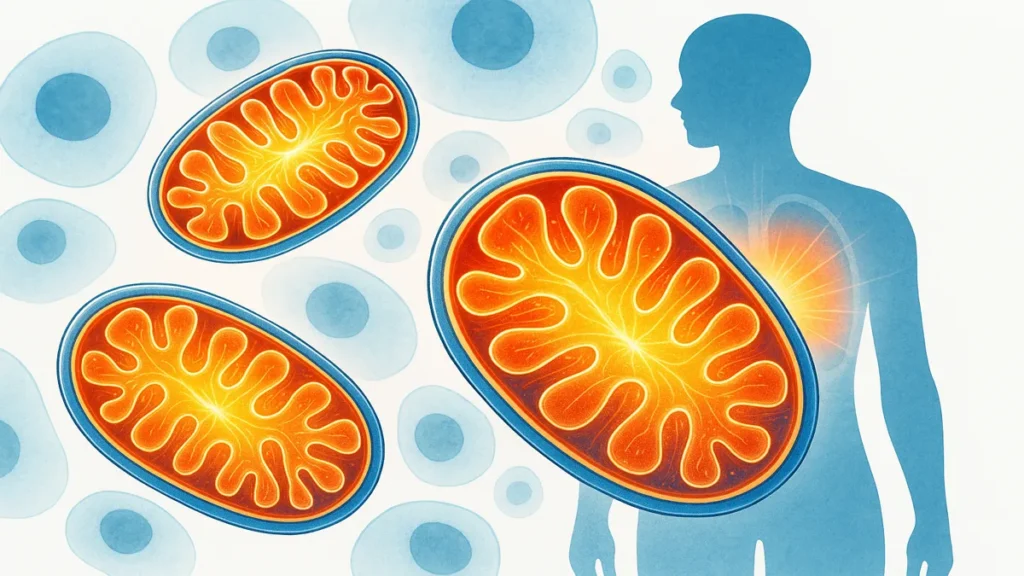
Metabolic therapy is quickly becoming one of the most talked about alternatives in modern health. While traditional medicine focuses on symptoms, this approach aims to restore how your body produces and uses energy. It’s a shift from treating disease to supporting your system at its core.
As more people face issues like chronic fatigue, stubborn weight gain, or inflammation, they start looking for deeper solutions. That’s where metabolic therapy steps in. It works by targeting your cellular energy engines — your mitochondria. When these are healthy, your body can burn fat, fight disease, and recover faster.
Although it may sound complex, the concept is simple. Metabolic therapy uses natural strategies like specific diets, fasting patterns, and targeted supplements to reset your body’s energy system. The result? More energy, better health, and improved weight control.
Whether you’re exploring it out of curiosity or because nothing else has worked, understanding how it functions is the first step. This guide breaks it all down for you in clear, actionable terms.
👉 Want to learn how to support your metabolism naturally? Explore our expert guide here.
The Basics of Metabolic Therapy

To truly understand how metabolic therapy works, it helps to begin with the fundamentals. After all, your body relies on a delicate balance of processes to function well. When energy production breaks down, your entire system feels it. This therapy focuses on fixing that at the root — starting from the inside out.
Simple definition for beginners
First of all, metabolic therapy is a health strategy designed to optimize how your body creates and uses energy. More specifically, it targets the mitochondria, often referred to as the powerhouses of your cells. When these structures perform well, your body burns fuel efficiently, manages inflammation, and recovers more effectively.
In most cases, this approach includes structured nutrition, strategic fasting, and science-backed supplements. Together, these tools improve your energy system naturally. As a result, many people notice more stable energy, clearer thinking, and easier fat loss.
How it differs from standard medical treatments
Unlike conventional treatments that often focus on symptoms in isolation, metabolic therapy takes a broader view. Instead of addressing each issue separately, it treats the energy dysfunction that may be causing several problems at once.
Moreover, while standard medicine often relies on prescriptions or procedures, metabolic therapy leans on food, lifestyle, and supplementation to drive change. This makes it especially appealing to those seeking long-term results without dependence on medication.
Origins and clinical relevance
Historically, the idea of targeting metabolism started with cancer research, particularly in aggressive brain tumors. Since then, interest has grown steadily. Today, metabolic therapy is being studied for its role in obesity, diabetes, Alzheimer’s, and even autoimmune conditions.
As more data emerges, many doctors and health experts now view metabolic support as a cornerstone of modern health — not an alternative, but a foundation.
How Metabolic Therapy Works Inside the Body

At its core, metabolic therapy focuses on how your body produces energy. Although this sounds simple, the process is incredibly complex. Yet when you understand the basics, everything about this therapy starts to make sense. In fact, it all begins inside your cells.
Cellular energy, mitochondria, and ATP
Inside every cell, there are tiny structures called mitochondria. These are your body’s energy factories. Their main job is to turn nutrients like glucose and fat into ATP, which is the molecule your cells use for energy.
Without enough ATP, your cells slow down. That means your muscles weaken, your brain fogs, and your organs work less efficiently. This is why supporting mitochondrial function is at the heart of metabolic therapy. The better your mitochondria perform, the more energy your body can access and use.
How metabolic dysfunction leads to disease
When metabolism breaks down, the consequences go far beyond fatigue. Poor energy production can trigger inflammation, damage DNA, and disrupt your immune system. Over time, this dysfunction may lead to serious conditions like diabetes, cancer, or neurodegeneration.
Even mild metabolic issues can cause weight gain, insulin resistance, and mood swings. That’s why fixing these imbalances early is so important. Metabolic therapy helps correct the root cause before symptoms spiral into disease.
Role of diet, fasting, and ketones in therapy
To restore balance, metabolic therapy often relies on food timing and nutrient choices. For example, intermittent fasting gives your cells time to repair. Low-carb or ketogenic diets reduce glucose stress and encourage your body to use ketones — an efficient alternative fuel.
Ketones support brain function, lower inflammation, and improve energy clarity. Combined with the right supplements, these strategies help reset your metabolism from the inside out — gently but powerfully.
What Conditions Can It Help Treat?

Metabolic therapy isn’t just a trend — it’s showing promise in serious health areas. While research is still growing, early results suggest it may support the body in fighting both chronic and advanced diseases. Let’s look at some of the most studied applications so far.
Cancer (e.g. ketogenic metabolic therapy in glioblastoma)
One of the most talked about uses is in glioblastoma, a fast-growing brain tumor. Researchers have explored ketogenic diets as part of metabolic therapy to help “starve” cancer cells of glucose. Since tumors often rely on sugar for energy, shifting the body to burn ketones instead may reduce tumor activity. While this isn’t a cure, it can support other treatments and improve energy in patients.
Obesity, diabetes, and inflammation
Metabolic dysfunction is a major cause of obesity and type 2 diabetes. By improving insulin sensitivity and reducing excess glucose, this therapy helps reset how the body stores and uses fat. In addition, lowering blood sugar also reduces chronic inflammation, which underlies many modern diseases.
Early studies in neurodegenerative diseases
Emerging research now links metabolic health to the brain. Early studies show that therapies using ketones may protect neurons, improve memory, and reduce oxidative stress in conditions like Alzheimer’s and Parkinson’s. While it’s still early, the connection is strong enough to spark major interest.
Metabolic Therapy in Practice

Knowing how metabolic therapy works is helpful. However, understanding how it looks in real life makes it much more actionable. While each plan may vary slightly, most protocols follow a core structure focused on nutrition, timing, and cellular health.
Typical protocols (ketogenic diet, supplements, fasting, oxygenation)
Most metabolic therapy plans include a low-carb or ketogenic diet, which lowers blood sugar and boosts ketone production. These ketones then serve as a clean energy source for your brain and body.
In addition, patients may follow intermittent fasting, which gives the body time to repair and increases mitochondrial efficiency. Specific supplements, such as magnesium, omega-3s, or L-carnitine, are often added to support energy metabolism and reduce inflammation.
Some advanced protocols include oxygen therapies or even hyperbaric oxygen sessions to enhance cellular repair. Together, these tools create an environment that encourages balance and regeneration.
Role of functional medicine professionals
While some elements are easy to apply at home, personalized guidance makes a big difference. Functional medicine doctors or nutritionists often help design and adjust the plan to fit your needs. They may monitor your biomarkers, tweak your food intake, and recommend the right supplements over time.
Scientific support and ongoing studies
Today, metabolic therapy is being studied in major research centers. Scientists are testing it not only in cancer but also in obesity, epilepsy, and brain health. While more trials are still needed, the results so far are encouraging and worth watching closely.
Is Metabolic Therapy Safe? What You Should Know

Metabolic therapy offers many potential benefits, but it’s not for everyone. Like any health strategy, it comes with limits and requires guidance. Before starting, it’s important to know who should be cautious and how to approach it safely.
Who should avoid it (e.g. insulin dependent diabetics)
Certain individuals should approach this therapy with care. For example, insulin-dependent diabetics may experience dangerous drops in blood sugar if the diet is too restrictive. People with liver or kidney conditions, eating disorders, or those recovering from surgery should also avoid strict protocols unless medically advised.
Possible side effects
In the first few days, some people report side effects such as fatigue, brain fog, irritability, or digestive discomfort. These usually occur during the transition to a low-carb or fasting-based plan. Fortunately, they tend to fade after a few days. Staying hydrated, getting electrolytes, and easing into the program can help.
Importance of medical supervision
Because metabolic therapy can shift your body quickly, professional supervision is strongly recommended. A qualified doctor or nutrition expert can monitor your health, track your progress, and make adjustments. This ensures both safety and effectiveness as your body adapts.
How to Support Your Metabolism Naturally (Even Without a Protocol)

You don’t need a full metabolic therapy protocol to start feeling better. In fact, small daily actions can already help your body reset, heal, and burn energy more efficiently. The key is consistency.
Everyday habits that mimic metabolic therapy benefits
Start with movement. Even light activity like walking after meals can improve insulin sensitivity and circulation. Then, focus on sleep. Getting at least seven hours per night helps regulate hunger hormones and repair cells.
Managing stress is just as important. Deep breathing, sunlight, and short breaks during the day keep your nervous system balanced. Over time, these simple habits increase metabolic flexibility.
Supplements, diet shifts, fasting windows
You can also support your metabolism through gentle nutrition changes. For example, eating more protein helps preserve lean muscle and stabilizes blood sugar. Adding healthy fats like avocado or olive oil improves satiety and energy.
Try fasting for 12 to 14 hours overnight. This short window gives your body time to recover without being too restrictive.
Targeted supplements like magnesium, green tea extract, or L-carnitine can also enhance fat metabolism and cellular energy production.
👉 Want to support your metabolic health with science-backed tools? Check out this guide.
Conclusion: Is Metabolic Therapy Right for You

Metabolic therapy isn’t a quick fix, but it offers real tools for long-term change. By supporting how your body creates and uses energy, it may help improve weight, energy, focus, and overall health.
However, because every person is different, it’s important to explore this path with care. If you’re facing a health condition or taking medication, always consult a qualified professional first.
That said, if you’re looking for a more natural and cellular approach to wellness, this method could be a strong fit.
👉 Ready to explore science-backed tools to support your metabolism? Start here.
Frequently Asked Questions (FAQ)
It’s a health approach that improves how your body creates and uses energy, mainly by supporting your cells and mitochondria.
Not exactly. The keto diet is often part of metabolic therapy, but the full approach includes fasting, supplements, and lifestyle changes too.
Yes. By improving energy efficiency and blood sugar control, it can support fat loss — especially when combined with healthy habits.
Yes. Studies show benefits in areas like cancer, obesity, and brain health. However, research is ongoing and still growing.
For basic strategies like diet and fasting, you can start on your own. But if you have a condition or take medication, medical supervision is recommended.



















